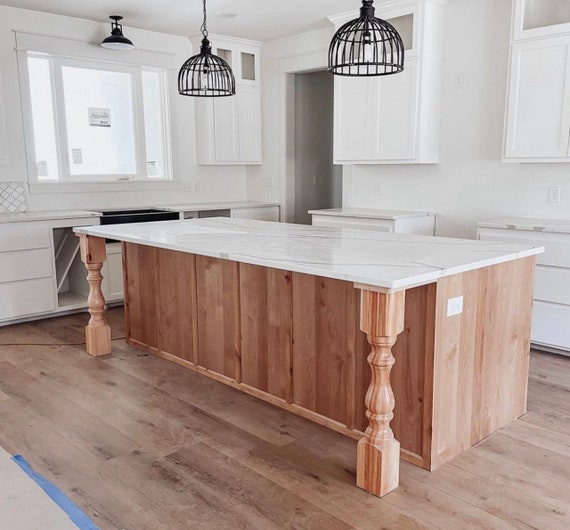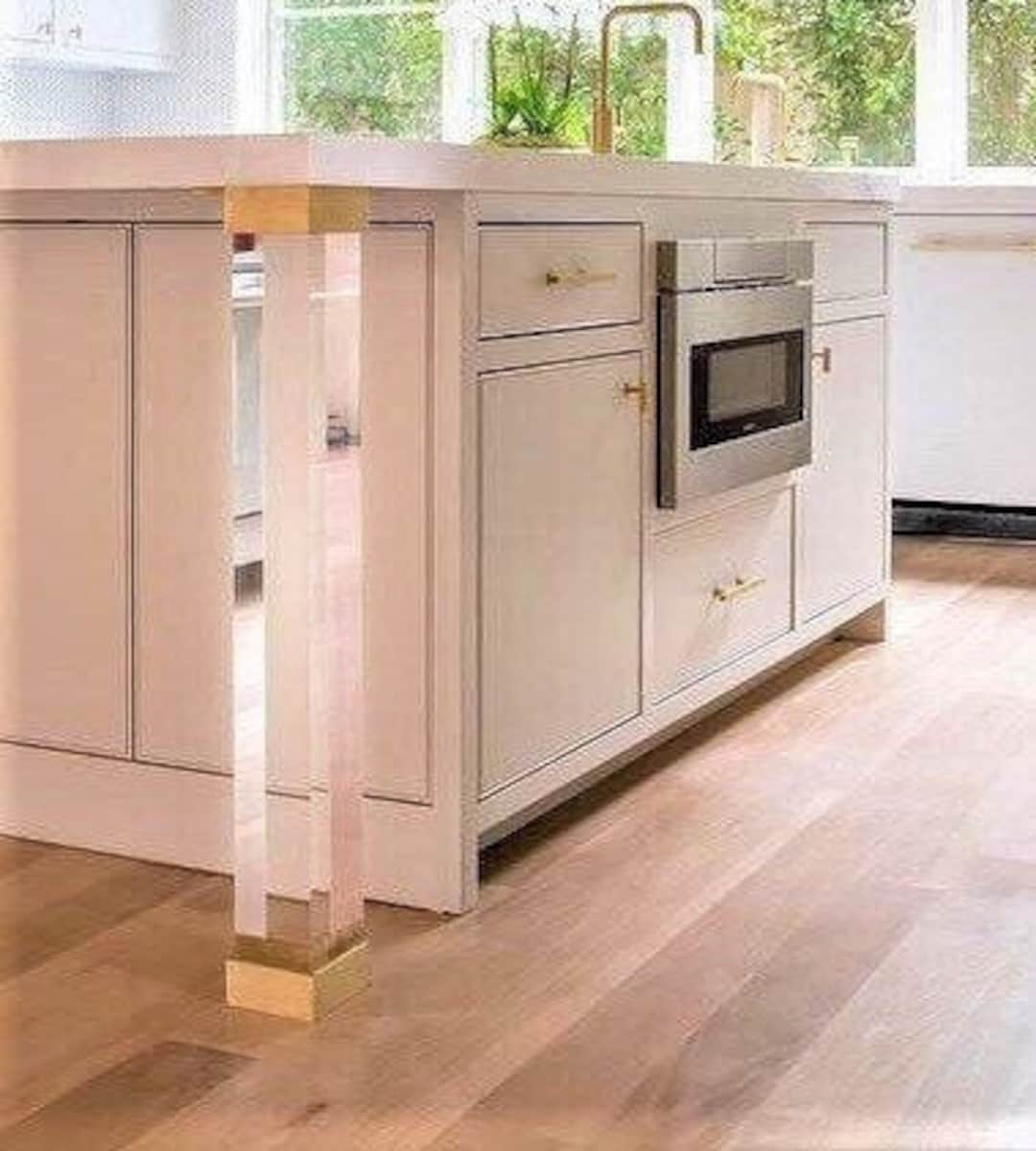Explore Timeless Options in Standard Legs For Kitchen Island Layouts
Explore Timeless Options in Standard Legs For Kitchen Island Layouts
Blog Article
Key Factors To Consider for Discovering the very best Legs For Kitchen Island for Your Layout
When selecting the excellent legs for your kitchen area island, several crucial considerations enter play that can substantially impact both performance and looks. The option of design, elevation, and product must align with your total kitchen area style to guarantee an unified look. Furthermore, stability and upkeep demands are crucial for lasting usage and simplicity of treatment. Comprehending these variables can improve your kitchen area's functionality and aesthetic allure, however the subtleties of each consideration can usually be ignored. What effects might these selections carry your kitchen's total environment?
Determine Your Style Choice
Establishing your style choice is critical when choosing the excellent legs for your kitchen island. The legs of your kitchen area island not only offer a practical objective but likewise add considerably to the general aesthetic of the area. Identifying your design style-- be it modern, rustic, conventional, or industrial-- is essential.
For a modern kitchen area, take into consideration streamlined, minimalistic legs that complement tidy lines and open areas. Conventional cooking areas commonly prefer transformed or luxuriant legs, which can include a touch of sophistication and refinement.
In addition, consider the elevation and proportion of the legs in connection with the island's surface area. This makes certain the visual equilibrium and functionality needed for daily usage. Examining the existing aspects in your cooking area, such as cabinets and home appliances, can additionally lead your choice, ensuring cohesiveness in layout. Ultimately, your style choice will affect not just the option of legs but also the general consistency of your kitchen area's layout.
Select the Right Product
Picking the best material for your kitchen area island legs is crucial in making certain both durability and aesthetic charm. Numerous products provide distinct benefits, and the option typically mirrors your design choices and functional requirements.
Wood is a popular option, giving warmth and flexibility. It can be stained or repainted to match your kitchen decoration, making it versatile to different designs, from rustic to contemporary. Timber may need routine upkeep to maintain its appearance and honesty.

If you look for a distinct touch, consider acrylic or glass materials. They can produce an impression of area and agility in your cooking area, making them an excellent selection for smaller locations - Legs For Kitchen Island. These alternatives may need cautious handling and upkeep to avoid scratches.
Eventually, the material you select must align with your kitchen area's overall design, making certain that the legs serve both practical and ornamental purposes.
Think About Elevation and Proportions
When developing a kitchen island, elevation and proportions play an important duty in making certain performance and comfort,. The common elevation for a cooking area island typically varies from 36 to 42 inches, lining up with standard counter elevations or bar elevations, respectively. This measurement is important for integrating with surrounding feceses and counter tops, allowing convenience of usage during meal prep work and social interactions.
Furthermore, the island's percentages have to enhance the general cooking area format. A well-proportioned island needs to not overwhelm the space; instead, it needs to develop a well balanced aesthetic. Think about the ratio between the island's size and length, ensuring it supplies sufficient surface without crowding the kitchen area. A basic guideline is to preserve a width of 24 to 48 inches, assisting in activity and accessibility.
Furthermore, the elevation of the legs or base can influence the aesthetic allure and capability. Taller legs might offer a more contemporary, ventilated feeling, while much shorter ones can evoke a conventional, based look. Eventually, meticulously taking into consideration elevation and percentages will certainly result in a cooking area island that is both aesthetically appealing and functionally effective, improving the general style of the room.
Assess Stability and Toughness
A kitchen island's legs need to not only enhance its elevation and proportions however also give sufficient stability and toughness to support daily activities. The legs are important to the overall performance of the island, as they birth the weight of the countertop and any additional loads, such as appliances or cooking tasks.
When examining stability, it is critical to take into consideration the leg layout and product. For example, strong metal or solid wood legs commonly offer exceptional strength compared to lighter products like crafted wood or plastic. Additionally, a wider base can boost stability, minimizing the danger of wobbling or tipping throughout use.
Durability is similarly crucial; the legs should stand up to deterioration from everyday usage. Think about finishes that shield versus scratches, dents, useful source and wetness, particularly in a kitchen environment. In addition, evaluate the high quality of building and construction, such as attachments and joints, which can considerably affect the legs' lasting efficiency.
Inevitably, buying well-crafted legs that focus on security and toughness will guarantee your kitchen island remains a reliable office for years to come, improving your cooking experiences while maintaining aesthetic allure.
Variable in Maintenance and Treatment
Maintenance and treatment are important considerations for making sure the durability and efficiency of kitchen island legs. When choosing legs, it is vital to examine the materials made use of, as various options require differing levels of maintenance. For example, wooden legs may need regular refinishing or securing to stop dampness damages and scrapes, while steel legs might require routine polishing to maintain their luster and prevent corrosion.
Additionally, the surface used to the legs can influence maintenance demands. A high-gloss finishing may be less complicated to clean however could reveal scratches and fingerprints quicker than a matte surface. It is recommended to choose materials and finishes that enhance your lifestyle; for example, if you frequently organize events, select long lasting products that can endure wear and tear.
Additionally, take into consideration the cleansing procedure associated with keeping these legs. Smooth surfaces commonly require minimal effort, while elaborate designs may gather dust and grime, requiring more labor-intensive cleansing approaches. Legs For Kitchen Island. Ultimately, factoring in the upkeep find more information and treatment required click for source for your picked kitchen island legs will certainly not just improve their aesthetic charm yet likewise ensure their practical stability in time
Final Thought
In verdict, selecting the ideal legs for a kitchen area island necessitates careful factor to consider of different elements, including design style, material option, stability, elevation, and maintenance. Each element plays a crucial duty in making sure that the legs not just enhance the aesthetic charm of the cooking area yet additionally provide the needed support and toughness for daily use. An educated decision will eventually add to a useful and aesthetically pleasing kitchen area atmosphere.
The legs of your kitchen area island not only offer a practical objective however also add significantly to the total aesthetic of the room.Maintenance and treatment are essential factors to consider for making certain the durability and performance of kitchen area island legs. Wood legs might call for regular refinishing or securing to stop wetness damage and scratches, while metal legs may need routine brightening to preserve their luster and protect against corrosion.
Eventually, factoring in the maintenance and treatment needed for your picked kitchen island legs will certainly not just improve their aesthetic charm but likewise guarantee their useful integrity over time.

Report this page